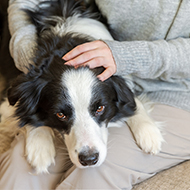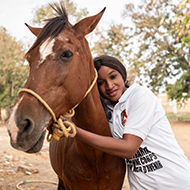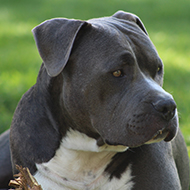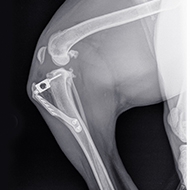AR revealing a 3D image of a horse’s heart when held over a drawing of the same.
Technology allows students to look inside an animal by holding their smartphone against an image
Students at the University of Liverpool's School of Veterinary Science are using state-of-the-art smartphone technology to analyse the internal anatomy of animals.
Augmented reality (AR) allows the students to see inside an animal by holding their smartphone against an image or other physical source, which then reveals another set of images, such as a video, on their device.
Avril Senior, a lecturer in learning technology and senior tutor in the school of veterinary science, said: "We are always looking for new ways to engage learners and help the get the most out of their learning experience here. We follow evidence-based best practice to utilise and apply technology to improve teaching delivery."
The team developed a 3D image of an equine heart, which is revealed on the user's smartphone when held up against cardiac drawings. In addition, a short video of a horse in the school's operating theatre is played when when a device is held up to an image of the theatre doors.
There is also an image of a horse that reveals its internal anatomy in three dimensions when viewed through a smartphone or tablet.
Avril said: "Designing guides to aid the understanding of anatomy, and the performance of clinical skills, by producing resources for our veterinary teaching suite and hospitals is the more serious teaching application of AR.
"Students can see through to the 'inside' of a more just by holding up their smartphone. They can then relate this to the patients they are seeing in the clinic."
The technology has already been trialled at open days and there are plans to introduce the technology to the school's new curriculum.
For a demonstration of the school's augmented reality, visit http://pcwww.liv.ac.uk/vets/openday/AR_images.html
Image (C) University of Liverpool







 Birmingham Dogs Home has issued an urgent winter appeal as it faces more challenges over the Christmas period.
Birmingham Dogs Home has issued an urgent winter appeal as it faces more challenges over the Christmas period.
